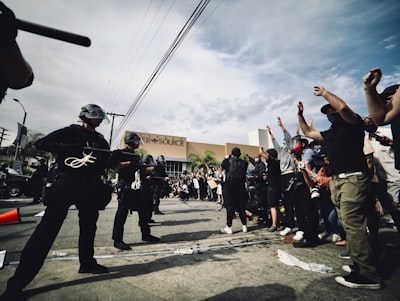Summary
On July 10, 2025, federal authorities—specifically Border Patrol and U.S. Customs and Border Protection—conducted a raid on a Southern California farm in Camarillo, targeting what was described by officials as a marijuana-growing facility. Protesters gathered in opposition, and a confrontation ensued. Agents threw smoke or chemical canisters to disperse the crowd, with images showing demonstrators retreating and some being detained with their hands bound. It's unclear if the affected individuals were workers or protesters. Three people were taken to hospitals, although details on their conditions remain sparse.
The farm, identified as Glass House Farms, holds legal cannabis cultivation licenses and also grows tomatoes and cucumbers. The raid sparked confusion and fear among local families, particularly immigrant communities already on edge from intensified enforcement activities throughout Southern California.
Analysis
This incident highlights several interwoven tensions in contemporary America, especially in regions with significant immigrant labor and legal cannabis industries. The use of force—smoke or chemical agents—against protesters signals a hardline approach by federal agencies. Notably, the article underscores the opacity and confusion inherent in such operations: we don't know if those detained were farmworkers, protesters, or both, and the rationale for deploying crowd control measures remains vague.
Politically, the renewed focus on raids and the deployment of the National Guard reflect ongoing shifts under the Trump administration, with immigration enforcement being prioritized and visibly militarized. The targeting of a farm that, on paper, is legally registered to grow cannabis raises questions about the relationship between federal and state jurisdictions, as well as potential underlying motives that extend beyond stated concerns about illegal activity.
Ethically and socially, the raid stirs anxiety within immigrant communities, as illustrated by the story of Judith Ramos, whose father vanished during the operation. Such actions have consequences not only for those directly targeted but also for their families, local economies, and the broader fabric of trust between communities and institutions.
Discussion
What’s at stake, beyond the specifics of this raid, is the ongoing friction between federal enforcement priorities and state- or community-level realities. Legal cannabis in California, for example, creates a patchwork of legitimacy that clashes with federal prohibition. The presence of immigrants—often essential laborers in agriculture—further complicates the narrative, where issues of legality, labor rights, and humanitarian concern overlap.
The escalation of militarized enforcement tactics at farms, car washes, and even public spaces like parkings lots, as noted, may signal a broader trend towards normalization of such responses to social dissent and immigration infractions. What does it mean when peaceful protest is met with force, or when residents live in fear of vanishing family members? How do these choices shape perceptions of justice, belonging, and the rule of law?
There are parallels to other historical moments where enforcement priorities run roughshod over nuanced realities: Prohibition era raids, labor busts in the early to mid-20th century, or more recently, ICE sweeps during the Trump years. Each time, the collateral damage includes not just the immediate arrestees but the cohesiveness and morale of entire communities.
As public discourse tilts toward increasingly polarized stances on immigration and law enforcement, these episodes test our willingness to question both state power and our own assumptions about security, legality, and humanity. Will these events lead to policy reform, increased distrust, or further escalation? The answers, for now, remain unresolved—shaped by how vigorously we confront the uncomfortable realities beneath each headline.

Comments
No comments yet. Be the first to comment!